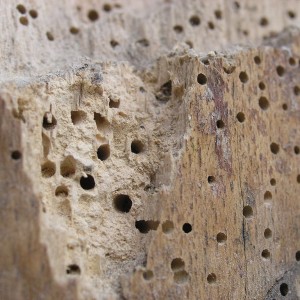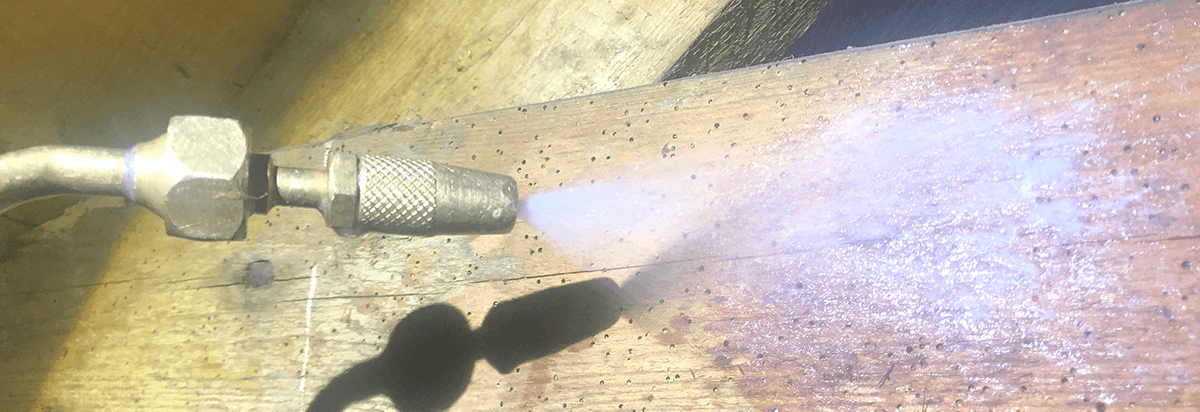
Close up of a piece of beech wood, infected by the common woodworm (Anobium punctatum). Diameter of the holes is about 1 mm to 1.5 mm. More examples
The most common form of woodworm infestation in the North and North East of Scotland is produced by the Common Furniture Beetle (Anobium punctatum), or more easily understood as ‘Woodworm’. Diagnosis is fairly straightforward and if there is no record of any previous treatment then it is advisable to have the area looked at by a specialist like ourselves.
Treatment of Woodworm
Our water-based insecticide treatment offers a deep-penetrating solution to prevent and eradicate wood boring insects like woodworm. The treatment process is usually fairly straight forward, and re-entry is normally around 1-2 hours after treatment.
The timbers should be touch dry in an hour or so depending on the type of wood and ambient conditions, and it doesn’t have a ‘finish’ (no discolouration or film).
Our experience shows that woodworm tends to be found in areas with a higher moisture content than normal e.g. attic/roof spaces, kitchens and bathrooms, along perimeter walls, on ground floor timbers with poor ventilation. Live or recent problems can usually be identified by the 1-1.5mm exit holes left by the woodworm larvae as they pupate and fly off, leaving a light coloured dust (frass) and holes behind.
Examples of Woodworm Treatments carried out by McKnight Building Preservation
If you suspect there maybe woodworm affecting your property, get in touch with McKnight Building Preservation on the following.
Call: 07793680185
Email: info@mcknightbuildingpreservation.co.uk
Fill in the form below

